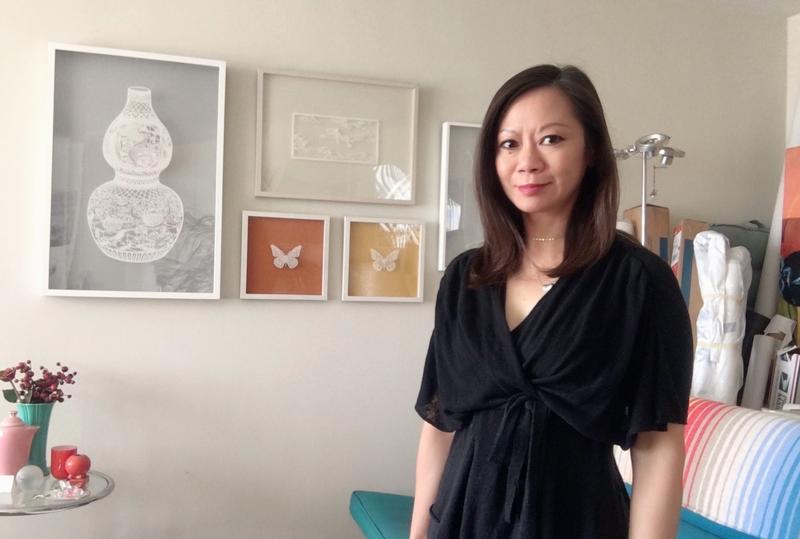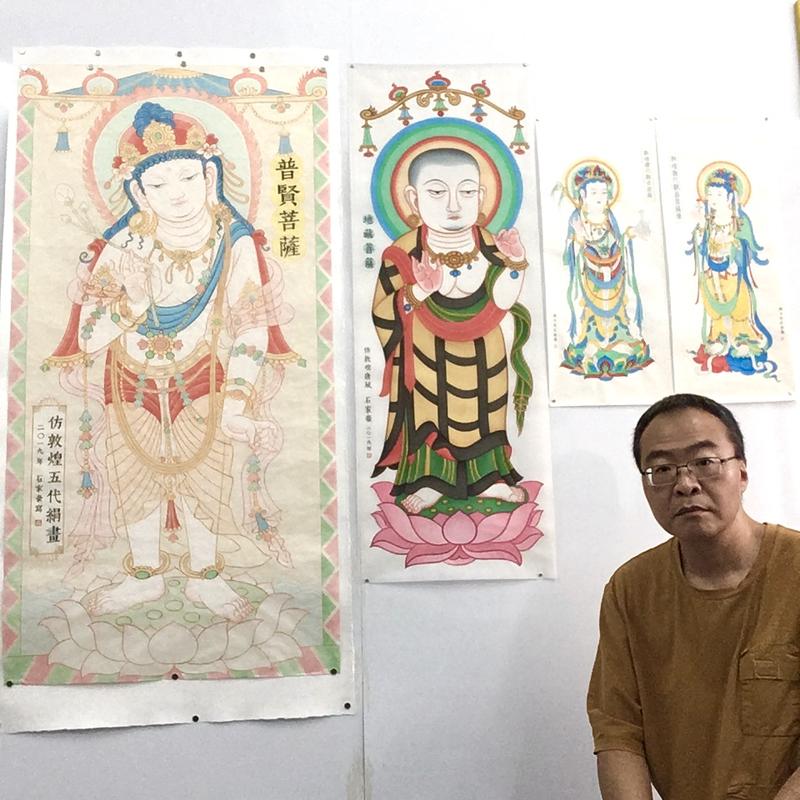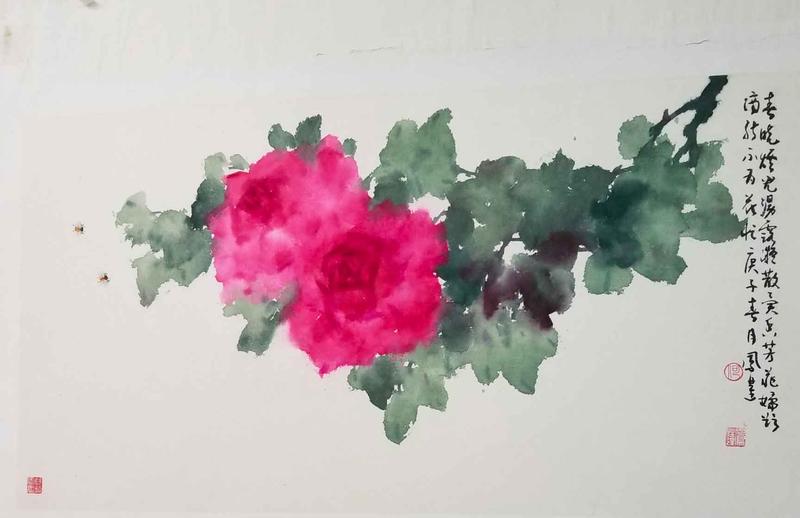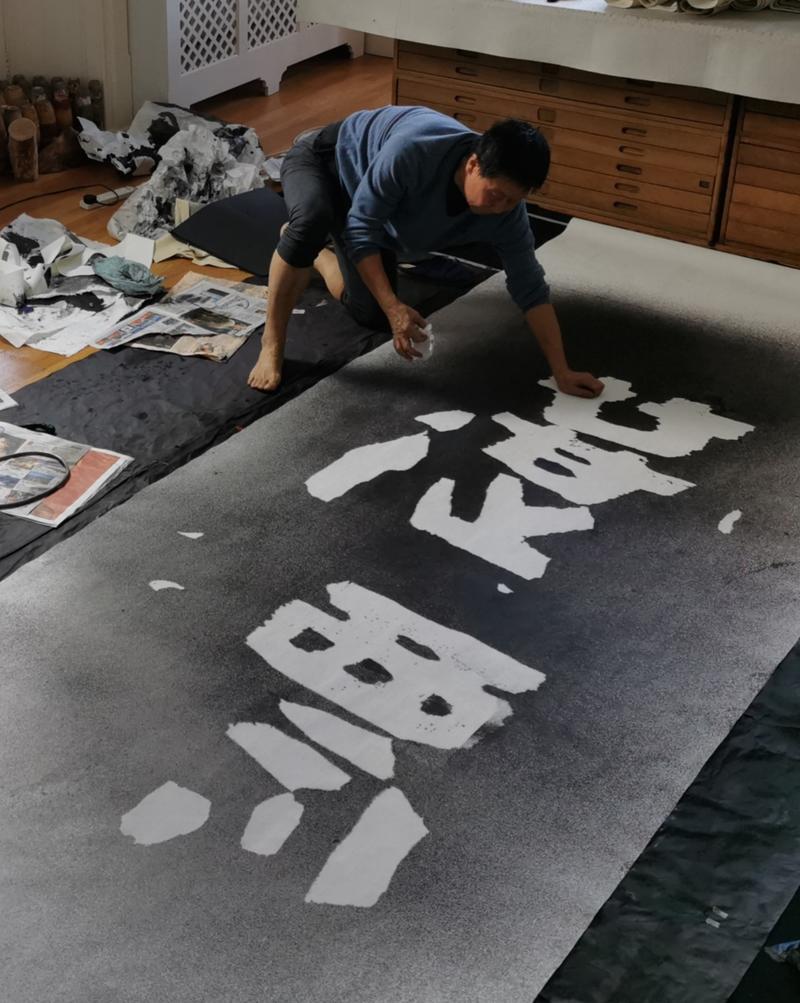ASHMOLEAN ARTISTS AT HOME - PART TWO
8 minute read
By Felicitas von Droste zu Hülshoff
Chinese Paintings Programme Co-ordinator
One of the great enchantments of my work as Chinese Paintings Programme Co-ordinator is to be able to invite Chinese artists to come to the Museum to tell us more about their work and to discover how they perceive the world. I wondered how artists are dealing with their changes in circumstances over the past few months, and so I have been in touch with four artists represented in our Chinese paintings collection who live all around the world. I asked them all the same question: Has the lockdown, or the COVID-19 pandemic, affected your work, and if so, how?
Bovey Lee
The cut paper artist Bovey Lee (b. 1969) lives in Los Angeles, California, USA. Originally from Hong Kong, Lee works with traditional Chinese paper cutting techniques to express concerns about the modern world. She needs absolute concentration to cut by hand the delicate xuan paper (a kind of rice paper), following a complex template she creates beforehand on her computer. Lee’s work is represented in collections around the world and the Ashmolean holds several of her paper cuts in its collection. Recently, some of her works were on view in the Ashmolean exhibition A Century of Women in Chinese Art. Last year I met Bovey Lee when she visited Oxford to research the Ashmolean’s collection and to deliver a captivating artist talk. During the last few months, Bovey Lee has been very active on social media, teaching paper cut workshops from her home in LA.
I live in Los Angeles. The lockdown has silenced the symphony of sounds outside my windows. Already a vast city, it seems infinitely more spacious. And I feel the same expansion of space within my own world. As an artist who normally needs solitude for her work, I have been drawn to online projects that connect me to others, albeit through a tiny hand held screen in which we speak and move like 2D miniature figures. Facilitating for the digital domain, I have been spending most of the studio time on Zoom meetings, as well as planning workshops and various collaborations. It has been an interesting change and a rather different mode of working for me

Bovey Lee in her studio
Wilson Shieh
Wilson Shieh (b. 1970) is a Hong Kong-based artist who mainly paints figures using traditional Chinese techniques. His paintings are executed with fine brushwork known in Chinese as gongbi, often on silk, yet they are far from traditional in style. His paintings are often on colourful themes derived from popular culture in East Asia, or inspired by his immediate environment in Hong Kong. In his architecture series of paintings, he transforms skyscrapers into people wearing tailor-made costumes. Shieh’s paintings deal with modern identity in Asia, often with a note of humour. In 2018/19 his works depicting naked musicians were included in the Ashmolean exhibition The Naked Form in Modern Chinese Art. He came to visit the Ashmolean in autumn 2018 and provided an introduction to his techniques and inspiration.
The COVID-19 pandemic is very serious around the world. But here in Hong Kong we are rather safe. Since January this year, everyone started to wear surgical masks in public areas. That is an experience we learned from the outbreak of SARS back in 2003, that face masks really stop the spread of a virus. In half a year, the diagnosed cases of COVID-19 in Hong Kong is around 1100 and the death toll is limited to 7.
But the art scene is slow here as gallery exhibitions are either cancelled or rescheduled. Fortunately, I can still go to my studio by car every day. I spent some time looking and studying classical Buddhist icons which is out of my routine. I am not a Buddhist but I copied some Buddhist paintings as a way to practice skills of Chinese ink painting back in my college days. In this difficult time, I have taken a break from my routine to make copies of some Bodhisattva images from a Dunhuang mural and silk painting from the Tang dynasty. Looking at these elegant and merciful figures, I get energy and inspiration to keep working.

Wilson Shieh in his studio
Ho Fung-lin
Ho Fung-lin was born 1944 in the South of China and studied painting under Zhao Shao’ang (1905-1998), one of the great masters of the Lingnan School, a style of painting from South China which emerged in the 19th century stimulated by Western art. Ho’s painting style follows Zhao’s principles of innovation within traditional Chinese painting. Her paintings are colourful and expressive compositions, achieved through variation of ink tones. They often include her own poetry. The Ashmolean held a solo exhibition of her work in 1986 and holds several of her paintings in its collection. She is now living in Hong Kong.
Our lockdown here in Hong Kong is not serious, if you are not coming into the city. We wear masks, not only for our own protection, but also out of respect for the people around us, to show our goodwill that we hope you may not worry about getting infected. Public museums, libraries and galleries had been shutting down for some time, and now they are open with limitations on the numbers of visitors. So now it is possible for the students of Chao Shao-an and their followers to hold a joint exhibition in mid-July. The application for the venue was done one year ahead, prior to the outbreak of the pandemic.
As for myself, and perhaps some other artists, we keep working at home or at our own studios. The government does not encourage gathering, such as having meals together at this time. We would not invite friends, nor would they think of inviting us. It certainly will not be good for both parties. As an artist, I feel that I can be more devoted to my work, though that never means I can get more pieces painted.
Here, for the present moment, there are cases of infections from travelers. There were a few cases of infections where the original source was not located, meaning that it is not at all safe. We can go out freely – there is no banning whatsoever – but you have to bear your own consequences. My mounting artist travels to his office daily and now he can meet his friends for dinner, though restaurants’ capacity is eight guests per table.

Ho Fung-Lin, Roses, 2020
Qu Leilei
Qu Leilei is an internationally recognised artist with a close relationship to the Ashmolean Museum. Born in 1951 in the Northeast of China, Qu Leilei was a founding member of the avant-garde ‘Stars Group’ and participated in their first show in 1979 in Beijing. In the mid-1980s Qu Leilei took the difficult decision to leave his home country and moved to the UK where he studied at the Central College of Art in London. The Ashmolean has held two exhibitions of Qu Leilei’s works, the first one in 2005, which displayed a series of portraits from his work cycle Everyone’s Life is an Epic, and in 2017/18 his retrospective Qu Leilei: A Chinese Artist in Britain included some of his stunning life-size nude ink paintings. Still living in London today, he frequently comes to the Ashmolean to contribute to different events and workshops.
In the days that led to the lockdown, I initially found it increasingly hard to concentrate creatively and so turned my hand to more practical work like preparing inked up surfaces or pieces of paper for my collages.
Then as time went on I began to get reflective. A few weeks before the shops closed and the streets got quieter, when we were free to drive and think and travel to my studio outside London, I had been working on quite a substantial project about misinformation and fake news, producing very large calligraphy banners for a show planned in Italy. I was still recalling mantras of misinformation from climate change deniers and that the world was flat etc. The knowledge I had gained from this whole period was spinning in my head and it occurred to me that quite possibly actual events that led to the spread of the virus were very likely to be connected to the manipulation of true information about it. The current media and political storm – the denials, the accusations – continue as I now paint. So, ultimately, with reference to the here and now that we find ourselves in, my messages are changing and my search for what is really happening continues.

Qu Leilei, Electoral Vote, 2020





